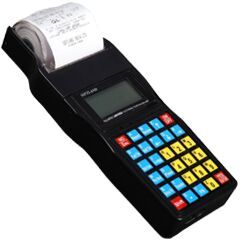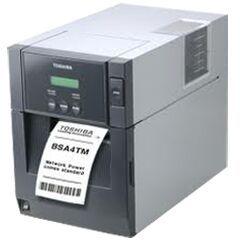Vehicle Tracking System
A vehicle tracking system combines the installation of an electronic device in a vehicle, or fleet of vehicles, with purpose-designed computer software at least at one operational base to enable the owner or a third party to track the vehicle's location, collecting data in the process from the field and deliver it to the base of operation. Modern vehicle tracking systems commonly use GPS or GLONASS technology for locating the vehicle, but other types of automatic vehicle location technology can also be used. Vehicle information can be viewed on electronic maps via the Internet or specialized software. Urban public transit authorities are an increasingly common user of vehicle tracking systems, particularly in large cities. VETRAC , is a wireless enabled vehicle tracking system, implemented by Net Research Labs for Indian urban city scenario.
...more
hand held billing machine
1. Palmtec Amphibia Palmtec Amphibia is a rugged, light weight Hand held portable computer that weighs about 400 Grams and is suitable for the rough environments. It consists of the following: High End 32 Bit ARM Series Micro-controller 2 / 4 / 8/ 12 MB Data Storage. Optional Up to 2 GB 30 Key Rugged Tactile Operable Keypad 128 X 64 Graphic LCD with White Backlight 32 Column 2 Inch High Speed Thermal Printer 7.4 V Rechargeable Li-Ion Battery Pack. USB interface Models with Optional Interfaces for RS232 / GPRS / BARCODE / SMART CARD / RF / Biometric Etc Uses: Billing in Delivery Sales Van & Order Processing in Distribution Network. Field Payment Collection / Loan Recovery for Banks, Insurance & NBFCs. Ticketing in Govt. Transport Corporation Buses & Private Buses. Ticketing in Zoo / Museum / Parks, Parking Lots. Spot Billing for Electricity & Water Companies. Courier Services Data Entry and Processing. Shop / Restaurant / Fuel Billing. Parking Lot Management. Property Tax Collection. KOT Management.
...more
Currency Counter
A currency-counting machine is a machine that counts money—either stacks of banknotes or loose collections of coins. Counters may be purely mechanical or use electronic components. The machines typically provide a total count of all money, or count off specific batch sizes for wrapping and storage. Currency counters are commonly used in vending machines to determine what amount of money has been deposited by customers. In some modern automated teller machines, currency counters allow for cash deposits without envelopes, since they can identify which bills have been inserted instead of just how many. The user is given the chance to review the automatic counter's idea of the quantity and a kind of the inserted banknotes before the deposit is complete.
...more
barcode machine
A barcode is an optical machine-readable representation of data, which shows data about the object to which it attaches. Originally, barcodes represented data by varying the widths and spacings of parallel lines, and may be referred to as linear or 1 dimensional (1D). Later they evolved into rectangles, dots, hexagons and other geometric patterns in 2 dimensions (2D). Although 2D systems use a variety of symbols, they are generally referred to as barcodes as well. Barcodes originally were scanned by special optical scanners called barcode readers, scanners and interpretive software are available on devices including desktop printers and smartphones. The first use of barcodes was to label railroad cars, but they were not commercially successful until they were used to automate supermarket checkout systems, a task for which they have become almost universal. Their use has spread to many other tasks that are generically referred to as automatic identification and data capture (AIDC). The very first scanning of the now ubiquitous Universal Product Code (UPC) barcode was on a pack of Wrigley Company chewing gum in June 1974. Other systems have made inroads in the AIDC market, but the simplicity, universality and low cost of barcodes has limited the role of these other systems until the first decade of the 21st century, over 40 years after the introduction of the commercial barcode, with the introduction of technologies such as radio frequency identification, or RFID.
...more
Attendance Machine
Time and attendance, or Workforce Management, systems are used by companies of all sizes to record working hours of employees primarily in order to pay their wages. Some companies have a requirement to record the number of hours spent on specific tasks in order to cost jobs accurately. This is referred to as job costing. A workforce management system enables an employer to have full control of all employees working hour’s right at an operators fingertips. It is also invaluable for ensuring compliance with labor regulations regarding proof of attendance. Companies with large employee numbers might need to install several clocking points in order to speed up the process of getting all employees to clock in or out quickly or to record activity in dispersed locations. Depending on the supplier, identification method and number of clocking points required, prices vary widely. A Workforce Management System protects a company from payroll fraud and provides both employer and employees with confidence in the accuracy of their wage payments. Other systems have made inroads in the AIDC market, but the simplicity, universality and low cost of barcodes has limited the role of these other systems until the first decade of the 21st century, over 40 years after the introduction of the commercial barcode, with the introduction of technologies such as radio frequency identification, or RFID.
...moreBe first to Rate
Rate ThisOpening Hours